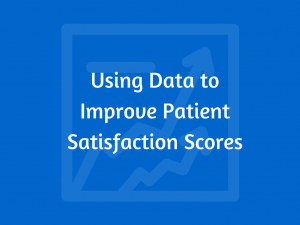Moving Toward Higher Patient Satisfaction Scores
As healthcare becomes more and more a quality driven industry, finding innovative methods of tracking, analyzing and making use of data collected on patient experience is going to be key to raising patient satisfaction scores. As you are likely already aware, those scores are what has been the driving force behind hospital and provider rankings.
Moving Toward Higher Patient Satisfaction Scores
As healthcare becomes more and more a quality driven industry, finding innovative methods of tracking, analyzing and making use of data collected on patient experience is going to be key to raising patient satisfaction scores. As you are likely already aware, those scores are what has been the driving force behind hospital and provider rankings.
HCAHPS
One of the surveys that helps to amass and organize this information is the Agency for Healthcare Research and Quality’s HCAHPS (Hospital Consumer Assessment of Healthcare Provider Survey). The HCAHPS is quite lengthy and is sent to a random group of patients throughout the year and their responses are what determines the range of patient satisfaction responses for a particular healthcare organization.
Using a random sample gives the widest breadth of responses within the patient population and, hopefully, allows a variety of patients to have a voice. Healthcare can sometimes seem like a closed-circuit, where even the loudest of squeaking wheels doesn’t get the oil, so innovations like HCAHPS attempt to address the concerns of patient populations that are at risk to be lost in the fray.
Still Imperfect
Of course the system is still imperfect, as is the survey itself. With the average American patient having a reading level of about 7th Grade, the 32-question survey can be nightmarish. Many patients will not complete or return it and, thus, their voices and concerns go unheard. There’s been a call for innovation, for finding a way to glean the information about patient satisfaction that hospitals need without overwhelming patients with these types of text-dense questionnaires.
The HCAHPS breakdown:
Composite topics
- Nurse communication (questions 1, 2, 3)
- Doctor communication (questions 5, 6, 7)
- Responsiveness of hospital staff (questions 4, 11)
- Pain management (questions 13, 14)
- Communication about medicines (questions 16, 17)
- Discharge information (questions 19, 20)
- Care transition (questions 23, 24, 25)
Individual topics
- Cleanliness of hospital environment (question 8)
- Quietness of hospital environment (question 9)
Global topics
- Overall rating of hospital (question 21)
- Willingness to recommend hospital (question 22)
Who is surveyed?
The questions are sent to random patients drawn from short-term, acute care, non-speciality hospital census data. Each hospital strives to have at least 300 completed surveys returned each year so that they can process the data and compile a report, which is reported to CMS annually. The results are accessible to payors, other hospitals, providers and, most importantly, current and potential patients.
Unbiased Evaluation
An important consideration when viewing the data is that once collected, the data is analyzed through third party programs so that no bias tampering of the data can be attempted in-house. These programs also use patient-mix adjustment to account for certain demographics, which may be unbalanced with a larger percentage of certain patient groups than other hospitals they would likely be compared to. Taking these differences into account allows for a more balanced look at the scores.
Using the Data
When the data is available and healthcare organizations can thoroughly review it, they’re going to want to look not just for areas that require improvement, but the ones that can be improved rather quick and painlessly; easy ways to make the lives of patients easier may be revealed via HCAHPS scores and to neglect them just because they aren’t major makes for missed opportunities.
Longitudinal Analysis
The data is standardized in such a way that from year to year, hospitals can and should track their progress toward meeting benchmarks in patient satisfaction scores, as well as quality measures designed to help them assess what opportunities for increasing capital exist — or could be created.
Innovation to Come?
While it would be ideal to have conversations with patients about concerns, there are simply too many voices in the fray to try to capture — and for now, data science is what healthcare organizations have to work with in terms of assessing their efficacy and accessibility.
However, as an industry healthcare should not be complacent with that; and as reimbursement becomes more closely tied to quality, no doubt changes to the current surveying model will become a prime drive in innovation in the years to come.







